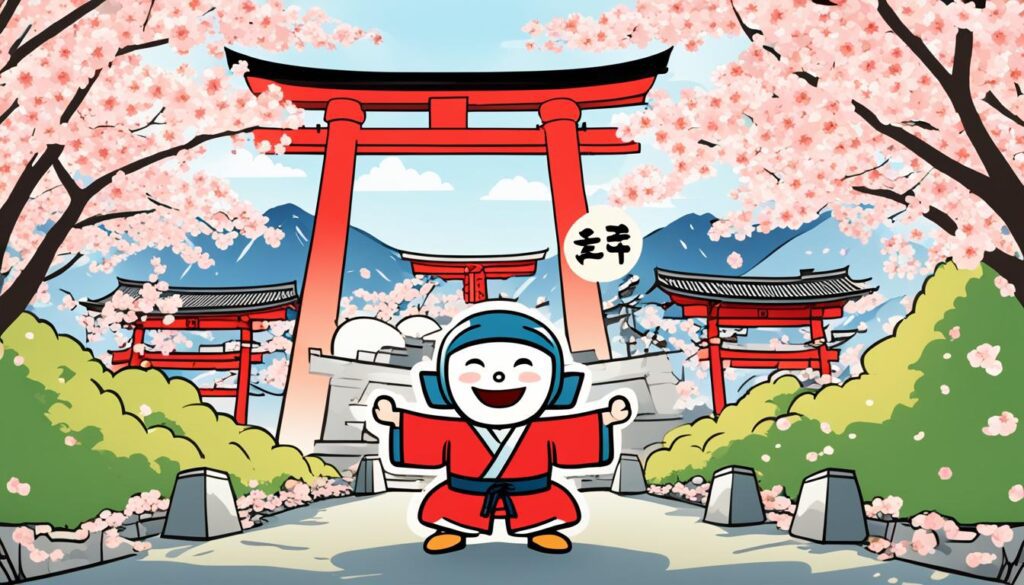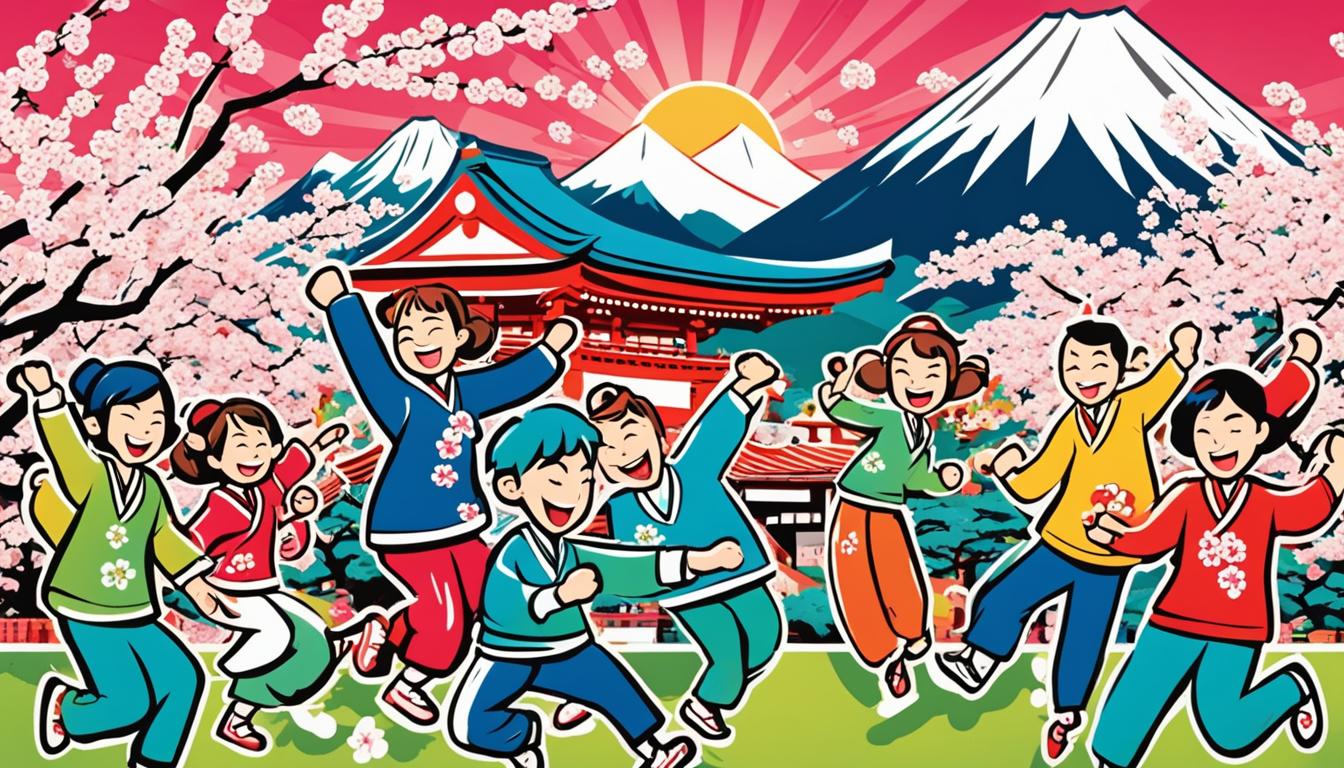In Japanese, there are several ways to say “what’s up” or inquire about someone’s well-being. These phrases can range from casual to formal and can be used depending on the relationship and context. Let’s explore some common ways to say “what’s up” in Japanese.
Greetings play a significant role in Japanese culture, reflecting the values of politeness and respect. By learning how to greet someone in Japanese, you can connect with locals on a more personal level and showcase your cultural understanding.
Throughout this article, we will explore different Japanese phrases and expressions for greeting someone and asking about their well-being. Whether you want to use a formal, casual, or informal greeting, we will guide you through the proper usage and pronunciation.
Genki?
One of the most common ways to say “what’s up” in Japanese is by using the word genki. It is a casual phrase that can be used among friends to ask how they are doing. The literal translation of “genki” is “healthy” or “well.” It can also be used as a response to the question, creating a back-and-forth conversation. For example, one person can ask “Genki?” and the other can reply with “Genki,” indicating that they are well.
If you’re looking for a casual and informal way to greet someone in Japanese, genki is a great option. It’s a simple and friendly phrase that can help you connect with Japanese speakers on a more personal level.
Explore more casual Japanese greetings and informal phrases in the next sections to expand your Japanese language skills and cultural understanding.
O-genki desu ka?
If you want to take a more formal approach, you can use the phrase “o-genki desu ka” to ask “what’s up” in Japanese. This phrase adds the honorific “o” at the beginning of “genki” to show respect. It is commonly used in professional or formal settings. However, it’s important to note that this phrase is used as a question and should not be used as a reply. The response can still be “genki,” indicating that the person is well.
Using “o-genki desu ka” demonstrates your politeness and understanding of formal Japanese greetings. This phrase is suitable when addressing superiors, colleagues, or people with higher social status. It showcases your respect and cultural awareness of polite Japanese phrases.
Politeness is highly valued in Japanese culture, and using “o-genki desu ka” sets the tone for a respectful conversation. It shows that you care about the well-being of the person you are addressing and are interested in their overall health.
Saikin Dou yo?
Looking for a super casual and slang way to say “what’s up” in Japanese? Well, then you’re in luck! The phrase you’re looking for is “saikin dou yo.” This phrase is commonly used among friends and has a laid-back vibe to it. It translates to “recently how?” and can be used to ask how someone has been lately. Keep in mind that “saikin dou yo” is formed as a question and can’t be used as a reply. However, you can still respond with “genki” or provide an update on what you’ve been up to.
So, if you want to impress your Japanese friends with some very casual Japanese phrases, give “saikin dou yo” a try. It’s a great way to show your familiarity and connect on a more informal level. Just remember to use it in the right context and with people you have a close relationship with. Enjoy adding this slang phrase to your Japanese vocabulary!
Other Japanese Greetings

While “what’s up” can be a versatile greeting, there are other Japanese phrases that can be used to greet someone and inquire about their well-being. These include phrases like “how are you?” (genki desu ka), “how have you been?” (ryooshin dou?), and “how is it going?” (dou desu ka?). Each of these phrases can be used in different contexts and relationships, ranging from formal to casual.
Casual and Informal Ways to Greet in Japanese
Aside from saying “what’s up” in Japanese, there are various casual and informal ways to greet someone in the language. These phrases add a touch of informality and playfulness, making them ideal for friends and close acquaintances. Here are a few examples:
おっす (Ossu): This slang greeting is commonly used among friends and has a laid-back vibe. It’s a shortened form of the phrase “おはようございます” (Ohayou gozaimasu), which means “good morning.” “おっす” (Ossu) is a brief and casual way to say hello, often accompanied by a nod or slight head tilt.
よっ (Yo): This casual greeting is similar to saying “hey” or “hi” in English. It’s often used among friends when meeting up or catching each other’s attention. “よっ” (Yo) can convey a sense of familiarity and excitement.
ヤッホー (Yahhoo): This informal greeting adds a playful flair to your interactions. It’s akin to saying “yahoo” or “whoo-hoo” in English. This exclamation is often used among friends to express joy or excitement when meeting or greeting.
These casual and informal greetings are just a few examples of how Japanese speakers connect on a more personal level. Remember to consider the context and relationship with the person you’re speaking to when using these greetings. Have fun experimenting with different greetings and embracing the friendly nature of the Japanese language!
Small Talk and Opening Conversations in Japanese
When it comes to small talk and starting conversations in Japanese, there are a few differences compared to English. While “what’s up” might be a convenient way to begin a conversation in English, in Japanese, it’s usually safer to make general statements about the surroundings or comment on topics such as the weather or the progress of someone’s children or pets.
Being aware of levels of closeness and politeness in Japanese conversations is important. Adjust your language accordingly to maintain a respectful and appropriate conversation. Here are some tips for engaging in small talk in Japanese:
1. Start with General Statements
Instead of asking direct questions like “what’s up,” it’s common to make general observations or statements about the situation or environment. For example, you can comment on the weather by saying, “暑いですね” (atsui desu ne) which means “It’s hot today, isn’t it?” This opens up the conversation and allows the other person to respond more freely.
2. Ask about Family, Hobbies, or Interests
Another approach to small talk in Japanese is to ask about the other person’s family, hobbies, or interests. For example, you can ask about their children, pets, or any activities they enjoy. This shows genuine interest in the other person and allows for a more personal conversation.
3. Use Polite Language
When engaging in small talk, it’s important to use polite language to show respect and maintain a friendly atmosphere. Polite forms of speech, such as adding “です” (desu) at the end of sentences or using the honorific form of words, are appropriate in most situations.
Here’s an example of a small talk conversation in Japanese:
| You | Other Person |
|---|---|
| 暑いですね。 | はい、本当に暑いです! |
| お子さんはいますか? | はい、二人の子供がいます。 |
| え、素敵ですね。同じ年齢ですか? | いいえ、1歳と3歳です。 |
By using general statements, asking about family, hobbies, or interests, and using polite language, you can easily engage in small talk and open conversations in Japanese. Remember to be attentive to the context and relationship with the person you’re speaking to, and enjoy the process of connecting with others through conversation.
Conclusion
Learning how to say “what’s up” in Japanese opens the door to engaging in casual conversations and fostering connections with Japanese speakers on a more personal level. By familiarizing yourself with various greetings, ranging from formal to informal, you can adapt your language according to the context and relationship with the person you’re conversing with.
Practice these phrases and explore other aspects of the Japanese language to enhance your language skills and deepen your cultural understanding. The ability to greet people in their native language not only shows respect but also creates a positive impression and facilitates smoother interactions.
As you continue your language learning journey, remember that language is a reflection of culture. By incorporating informal Japanese phrases into your conversations, you’ll gain insights into the nuances of Japanese social dynamics and foster stronger connections with native speakers.

